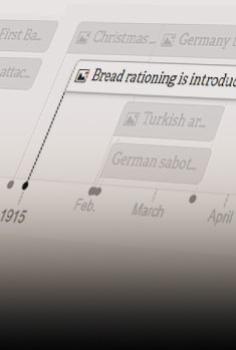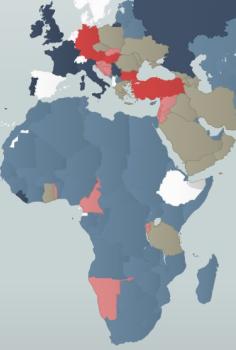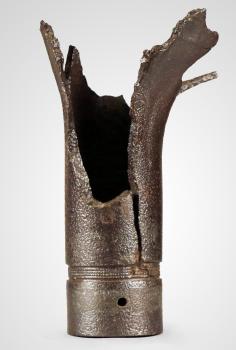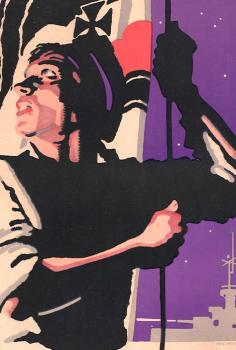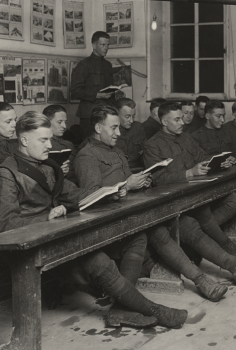“Every one of the builders had his sword girded at his side as he built. And the one who sounded the trumpet was beside me.”
—Nehemiah 4:18, cited on charm
This small charm highlights chaplains’ efforts to keep the bonds between service members close after the end of the war. From 1914-1918, chaplains from different faiths served those in battle without caring about what religion or country they came from. Witnessing the suffering of all people broke down barriers and stirred their compassion.
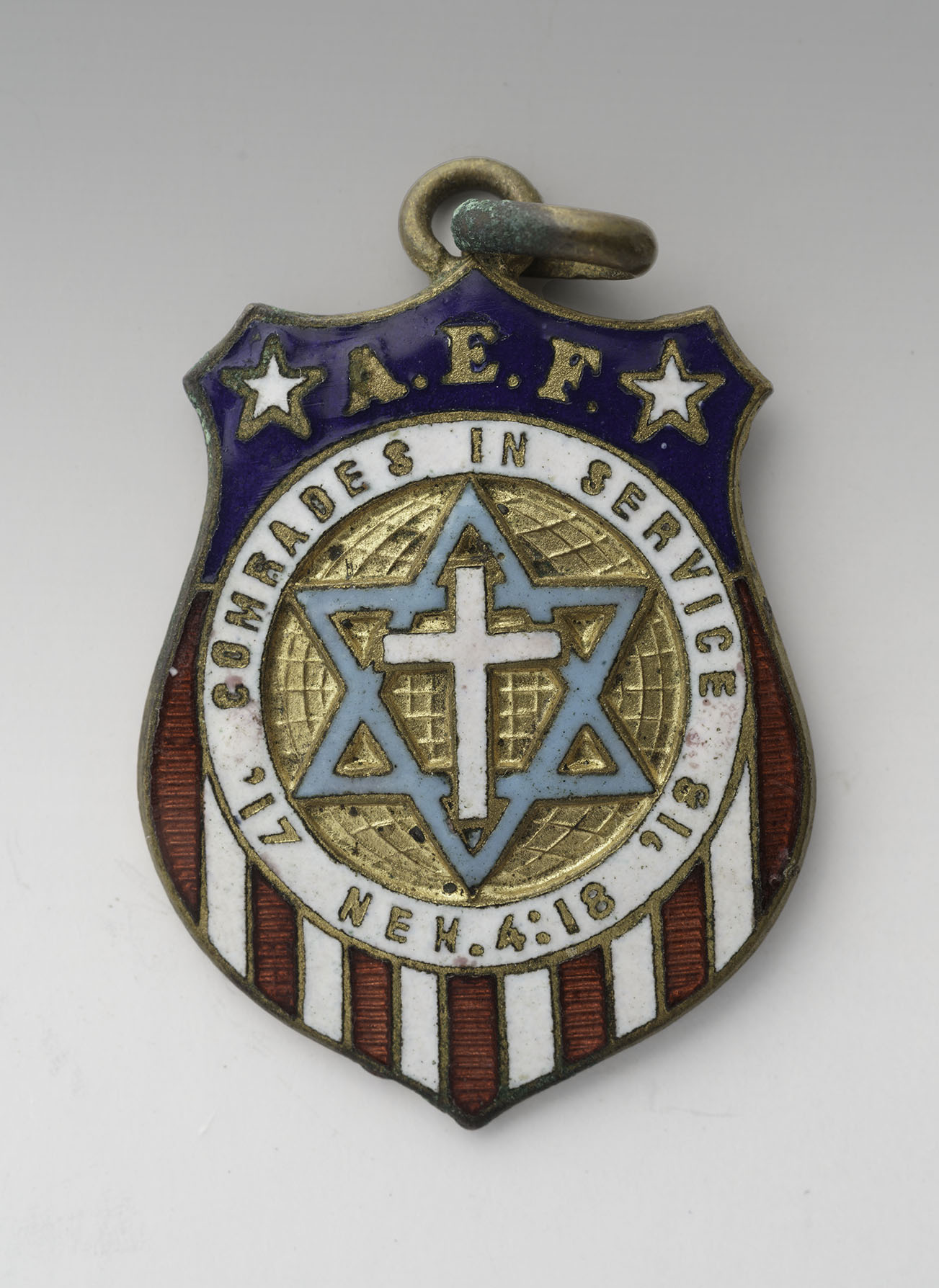
When fighting ended, American chaplain leader Bishop Charles Brent wanted veterans to continue the spirit of unity they’d found. Brent was committed to the idea of different faiths working together to help those experiencing war. While leading American chaplains, he brought Jewish, Catholic and Protestant groups together to support the war effort and became a pioneer of a 20th century movement for people to work together across faiths.
Brent saw the acceptance of different religions as the foundation for a new American chaplain system. He founded Comrades in Service as a veteran group to continue this work, “to bind Americans together as Comrades to work for a better America upon their return home.”
Combat forged connections that many people did not want to lose when the war ended. Veteran groups started after wars – like Comrades in Service, Veterans of Foreign Wars and the American Legion – allowed chaplains to continue friendships and service.
This Comrades in Service charm expresses its founder's hopes that veterans would stand together after the war and build understanding through collaboration. It reminds us how war unexpectedly created chances for progress, with many former fighters championing causes of unity over division. Ultimately, Comrades in Service became a part of the larger American Legion in 1919, demonstrating the lasting fellowship built among its veterans and clergy through World War I.
FIELD TEAM OF COMRADES IN SERVICE MAKES CIRCUIT OF EMBARKATION PORTS
Work Last Week in the Le Mans and Le Havre Areas Met With Enthusiastic Reception.
Feb. 15, 1919
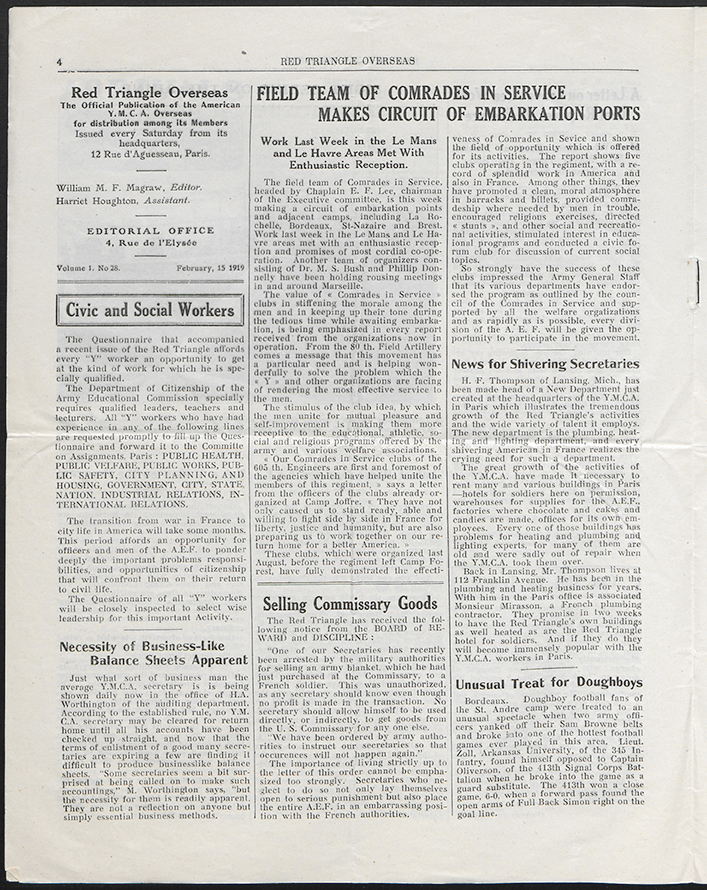
The field team of Comrades in Service, headed by Chaplain E. F. Lee, chairman of the Executive committee, is this week making a circuit of embarkation points and adjacent camps, including La Rochelle, Bordeaux, St-Nazaire and Brest. Work last week in the Le Mans and Le Havre areas met with an enthusiastic reception and promises of most cordial co-operation. Another team of organizers consisting of Dr. M. S. Bush and Phillip Donnelly have been holding rousing meetings in and around Marseille.
The value of « Comrades in Service » clubs in stiffening the morale among the men and in keeping up their tone during the tedious time while awaiting embarkation, is being emphasized in every report received from the organizations now in operation. From the 80th. Field Artillery comes a message that this movement has a particular need and is helping wonderfully to solve the problem which the « Y » and other organizations are facing of rendering the most effective service to the men.
The stimulus of the club idea, by which the men unite for mutual pleasure and self-improvement is making them more receptive to the educational, athletic, social and religious programs offered by the army and various welfare associations.
« Our Comrades in Service clubs of the 605th. Engineers are first and foremost of the agencies which have helped unite the members of this regiment, » says a letter from the officers of the clubs already organized at Camp Joffre.
« They have not only caused us to stand ready, able and willing to fight side by side in France for liberty, justice and humanity, but are also preparing us to work together on our return home for a better America. »
These clubs, which were organized last August, before the regiment left Camp Forest, have fully demonstrated the effectiveness of Comrades in Service and shown the field of opportunity which is offered for its activities. The report shows five clubs operating in the regiment, with a record of splendid work in America and also in France. Among other things, they have promoted a clean, moral atmosphere in barracks and billets, provided comradeship where needed by men in trouble, encouraged religious exercises, directed « stunts », and other social and recreational activities, stimulated interest in educational programs and conducted a civic forum club for discussion of current social topics.
So strongly have the success of these clubs impressed the Army General Staff that its various departments have endorsed the program as outlined by the council of the Comrades in Service and supported by all the welfare organizations and as rapidly as is possible, every division of the A. E. F. will be given the opportunity to participate in the movement.
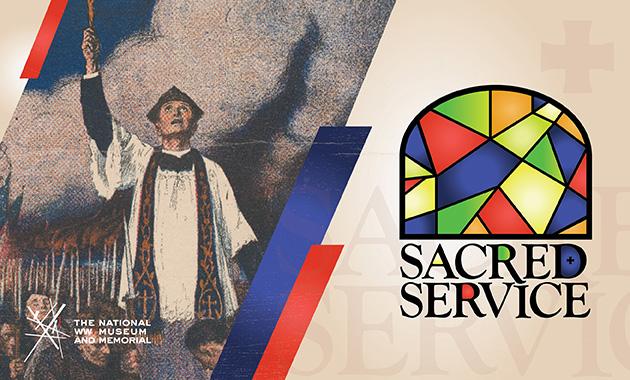
Learn more in "Sacred Service"
Rabbis, pastors, monks, imams, priests and more served with the fighting nations of World War I; many as unprepared for the horrors of war as the soldiers they served, yet they strove to bring courage, comfort and compassion to millions – on and off the battlefield.
An initiative of The Center for Religion, Culture and the Great War, made possible through generous support from Lilly Endowment Inc.

